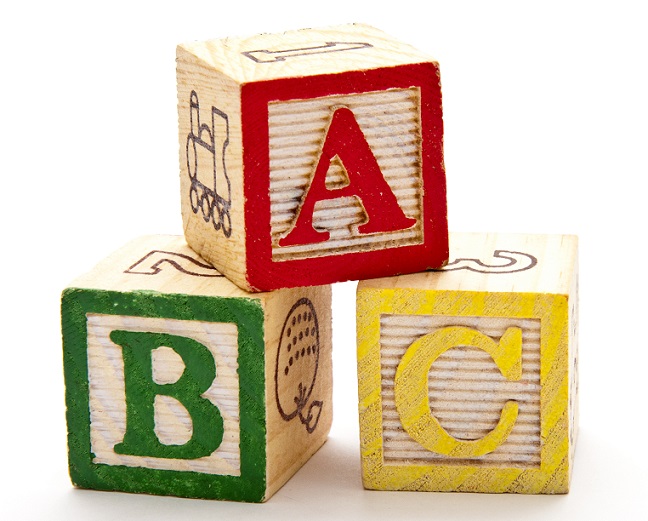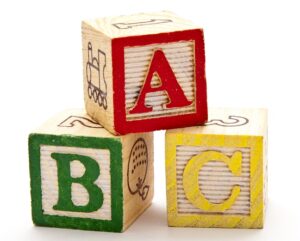A Guide to a Safe and Clean Environment
Schools and daycare centers are wonderful places to leave our children during the day. It’s where they learn new things and socialize with other kids, while the parents can go to work with the knowledge that their children are safe. But, running a daycare comes with the important responsibility of providing a clean and healthy environment. Keeping daycare facilities clean not only ensures the well-being of the little ones but also creates a positive impression for parents. Let’s explore the essential steps, tips, and benefits of daycare cleaning that every caregiver should know.
A is for Allergen Control
Children can be sensitive to allergens, so it’s crucial to control and minimize their presence in daycare settings. Regularly clean surfaces, toys, and bedding to prevent the buildup of allergens like dust, pet dander, and pollen. Using allergen-reducing cleaning products can help create a safe space for children with allergies.
B is for Basic Cleaning Practices
Of course, basic cleaning practices form the foundation of a healthy daycare. Sweep and mop floors, clean and sanitize surfaces being sure to disinfect high-touch areas such as doorknobs and light switches. Regularly empty trash bins and ensure that restrooms are properly cleaned and well-stocked with supplies.
C is for Colorful and Child-Friendly Spaces
In daycare settings, vibrant and child-friendly environments are essential for fostering creativity and learning. Incorporate colorful decorations and age-appropriate designs while ensuring that all materials are easy to clean and maintain.
D is for Disinfection Routine
Disinfection is a key aspect of daycare cleaning, especially in shared spaces. Develop a routine for disinfecting toys, play equipment, and surfaces to prevent the spread of germs and illnesses among children.
E is for Efficient Equipment
Invest in efficient cleaning equipment to streamline your daycare cleaning process. In particular, high-filtration vacuum cleaners and microfiber cloths are foundational tools that help maintain a hygienic environment.
F is for Flooring Care
Flooring in daycare centers experiences heavy foot traffic and spills. Choose flooring materials that are easy to clean and durable. Regularly vacuum, sweep, and properly mop floors to keep them clean and safe for children.
G is for Green Cleaning
Whenever possible, opt for environmentally friendly cleaning products to reduce the use of harsh chemicals. Green cleaning promotes a healthier environment for children, caregivers, and the planet.
H is for Hand Hygiene
Promote good hand hygiene among children and staff. For example, provide handwashing stations with soap and water. Additionally, you need to constantly encourage proper handwashing techniques to prevent the spread of germs.
I is for Indoor Air Quality
Maintaining good indoor air quality is essential for children’s health. Therefore, regularly change air filters, ensure proper ventilation, and use air purifiers if necessary to provide clean and fresh air for everyone.
J is for Janitorial Schedule
Create a janitorial schedule that outlines daily, weekly, and monthly cleaning tasks. Having a structured plan ensures that all areas are consistently cleaned and maintained.
K is for Kid-Friendly Cleaning Supplies
When children are present, it’s important to store cleaning supplies safely out of their reach. Choose child-resistant containers and secure cabinets and doors to prevent accidental access to cleaning products.
L is for Labels and Organization
Properly label cleaning products and keep them organized. Clear labeling helps caregivers easily identify and use the right products for specific cleaning tasks.
M is for Mealtime Cleanup
Mealtime can get messy, so ensure that dining areas are promptly cleaned after each meal. Wipe down tables, chairs, and high chairs immediately after use. Be sure to clean spills promptly to maintain hygiene and prevent accidents.
N is for Naptime Sanitizing
After naptime, sanitize cots, cribs, and bedding to provide a clean and comfortable resting environment for children.
O is for Outdoor Cleanup
Outdoor play areas also need regular cleaning. Sweep away debris, clean play structures, and ensure that outdoor toys are free from dirt, dust and germs.
P is for Pest Prevention
Prevent pests by keeping daycare spaces clean and dry. Seal cracks and crevices, and promptly address any signs of pests to maintain a hygienic environment.
Q is for Quick Cleanups
Spills and messes can happen throughout the day. Specifically, encourage caregivers to address spills promptly to prevent slips and falls and to maintain a clean environment.
R is for Restroom Hygiene
Maintain clean and well-stocked restrooms. Regularly disinfect sinks, toilets, and changing tables to ensure a sanitary space for children and caregivers.
S is for Staff Training
Train staff members on proper cleaning procedures and safety protocols. Well-informed caregivers contribute to maintaining a clean and safe daycare environment.
T is for Toy Cleaning
Toys are a source of joy for children but can also harbor germs. Therefore, regularly clean and disinfect toys to ensure they are safe for playtime.
U is for Upholstery Care
Upholstered furniture and soft surfaces also require attention. Vacuum upholstery regularly and address spills promptly to prevent stains and maintain a clean appearance.
V is for Ventilation
Proper ventilation is essential for preventing the buildup of indoor pollutants. Whenever possible, ensure that windows can be opened for fresh air circulation.
W is for Waste Disposal
Dispose of waste properly and regularly. Use secure trash bins and follow waste disposal guidelines to maintain a clean and odor-free environment.
X is for eXtra Care
Give eXtra care to areas that require special attention, such as diaper-changing stations. Keep these areas sanitized and stocked with essential supplies.
Y is for Yard Cleanup
If your daycare has an outdoor play area, regularly clean and maintain the yard. In particular, remove debris and trim vegetation to ensure a safe and inviting outdoor space for children.
Z is for Zero Tolerance for Hazards
Above all, you want to maintain a zero-tolerance policy for potential hazards. To this end, be sure you regularly inspect the daycare environment for safety concerns, and address them promptly to ensure the well-being of children.
Of course, providing a clean and safe daycare environment is essential for the health and happiness of children. By following the ABCs of daycare cleaning, caregivers can create a welcoming space that nurtures learning, play, and growth while ensuring the well-being of the little ones in their care.



